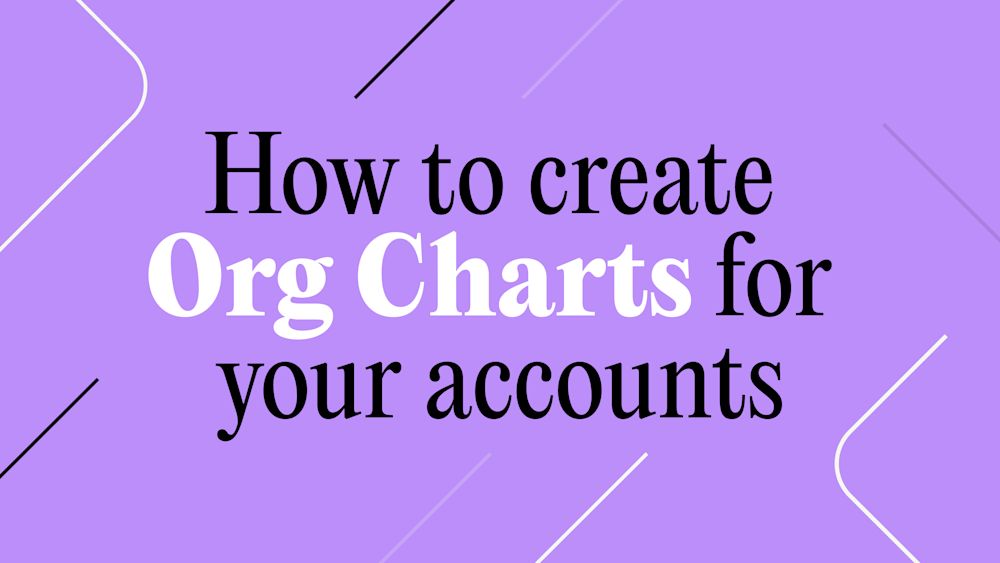Table of contents
Find out the best practices for creating org charts when mapping your accounts.

Creating organizational charts is a powerful endeavor, but what happens when you find yourself in uncharted territory with limited information? Mapping out an org chart when the details are unclear requires strategic thinking and a keen understanding of organizational dynamics. We'll delve into things to consider when crafting org charts if you don't have a clear blueprint.
Use What You Already Know
One of the best places to start when mapping out the org chart of your key accounts is leveraging your existing knowledge. Utilize the information in your CRM, meetings, and email correspondence to know firsthand who reports to who. This will provide a good foundation for the rest of your org chart and give you some insight on the nuances of that particular company’s reporting structure.
Identifying Seniority and Teams in Job Titles
You can also begin by categorizing roles based on their hierarchical significance, distinguishing between C-suite executives, VPs, Directors, and other levels within the organizational structure. This stratification provides a clear depiction of the reporting lines and establishes a visual hierarchy. Simultaneously, take into account the team affiliations inherent in each job title, categorizing roles under departments such as Finance, Operations, Marketing, and more. Additionally, consider that some titles might include the name of the product or project the individual is actively contributing to. This dual perspective ensures that your org chart not only reflects the vertical hierarchy but also the horizontal distribution of teams within the organization.
Use Available Job Postings
When companies advertise a job opening, they occasionally include the title of the person to whom the role reports. This valuable detail aids in placing existing employees with comparable titles into the org chart. Furthermore, job postings often offer insights into the responsibilities of the role, providing additional context about the team they’re in.
Iterative Approach
Understand that your initial attempt might not be perfect. Take an iterative approach and be open to refining your org chart as more information becomes available. Regular updates and adjustments will enhance the accuracy of your visual representation.
Ultimately, by incorporating these considerations, you can transform ambiguity into clarity, providing valuable insights into the organizational dynamics of your key accounts. Crafting org charts becomes not just a visual representation but a strategic tool for effective relationship management and successful navigation through the intricacies of organizational structures. You can also find immediately available org charts at The Org.


The ÂÜÀòÂÒÂ× helps
you hire great
candidates
Free to use – try today